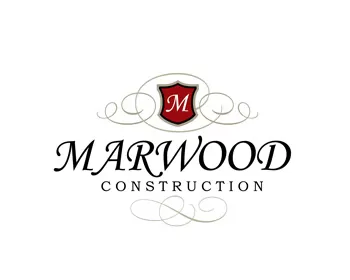
One of the more complex decisions that a business owner must face with their business property is if they should build a new building, buy an existing property, lease space or renovate their existing space. There are many issues to research and evaluate when measuring the optimum conclusion. In most cases collecting the necessary information and details requires the assistance of a number of professional service providers.
Securing the services of a commercial general contractor and a commercial real estate broker will pay enormous dividends vetting your viable options. A professional commercial general contractor can develop multiple scenarios for the different options you are considering. They are capable of developing the conceptual investments required for construction cost estimates for each of the possible scenarios.
The commercial real estate broker can provide some immediate access to current market values and comparable property values. Having this information allows the owner to create a financial feasibility for comparing the owners possible commercial property options with a high degree of accuracy.
Project Feasibility
The financial feasibility is a project pro-forma for each possible scenario the owner is considering. It is compiled of the relevant financial factors that are used to compose the probable cost elements and comparable market value data. For instance, in the case of constructing a new building, the owner would need to establish the structures total square footage and define the general finishes. The commercial contractor would compute the estimated construction cost to build the new structure. The commercial broker would provide the comparable properties for comparison for highest and best use. The owner would then compare the financial factors against other options.
In the case of buy versus lease, the owner might compare the financial comparisons to determine if they should buy or lease a similar building in a neighboring area. The commercial broker would provide the owner with those commercial property comparables to compare against the estimated construction cost. The owner would then conduct an analysis of all scenarios presented.
Although the decisions may not always be made on the financial aspects of the feasibility assessment, the project feasibility will play a significant role in the determination of the chooses. Factors like the location of the business, the need for future expansion and time requirements can have a major impact on the ultimate decision.
Develop and Evaluate Optimum Site Plan
One of the most important preliminary practices of planning a new commercial building construction project is to prepare a site plan. The typical site plan defines the property lines, utility easements and set back requirements. There is more to the site plan than just drawing a building that fits the owners specifications.
A site plan includes the parking and traffic needs of the public that may patronize the business. It also includes access for fire lanes for the fire department and other public emergency services. The placement for fire hydrants, traffic safety control and landscaping areas is key to a well planned site plan.
Optimizing the site plan is not just for new construction projects. If the owner is increasing the occupancy or adding an addition, the permitting authorities will require X amount of parking places for a certain amount of expected employees or shoppers. In the event you would need loading docks, this would require a sufficient layout for a tractor trailer to turn around.
A site plan for larger commercial projects become the cornerstone for complex civil plan drawings that are typically required by the municipal planning and zoning authorities. These larger commercial projects will be required to plan for rain retention for the property. As the owner increases the amount of impervious surfaces, the greater the need for planning and creating retention ponds on the property.
Increasing Efficiency Through Good Design
Every owner wants their business to operate efficiently. The floor plan of the office space, warehouse and manufacturing area must be designed with efficiency in mind. This is the result of the design team clearly understanding the interaction of the various business departments collaboration.
In a warehouse the design should key on the flow of receiving, storage and shipping. Products should be received in an area where if the trailer does not require immediate unloading, the trailer can be stored to allow unloading at a scheduled time without interfering with shipping. The same can be said in reverse about shipping. Shipping requires a defined area where the trucks can be loaded and timely be dispatched for delivery.
In an office space the owner will attempt to place key department personnel in close proximity to each other that collaborate daily with each other. Locating mutually used common equipment in immediate areas can add efficiency to everyone’s day. The storage of supplies that are regularly used is another factor that plays a role in the design layout.
When planning a manufacturing space the process dictates the most efficient design layout for the operation. Introducing the raw product of the process into the system should be near the beginning of the process design layout. The completed product should be placed near the shipping area. These types of design benchmarks place a high priority on operation efficiency.
Planning for Future Growth
Commercial property is a major capital investment. Most business’s do not like to move their operation from its location for a number of valid reasons. The actual moving of the business location is very inconvenient and disruptive to the day to day business operation. In addition it is very expensive to physically move the assets. For these reasons and more most business’s would rather avoid moving giving other available options.
The moving of a business is generally disruptive to day to day operations. It takes planning and a great deal of scheduling to pull off. This is one of the principle reasons that most business’s would rather remodel or add an addition if they have sufficient extra space.
The complexity of this general issue is why owners prefer to lease the business property. If they can lease a good location that allows them to expand over time, this situation becomes increasingly attractive in comparison to the thought of moving the business in 5 years.
The build, buy, lease or renovate decision is a complicated process. It requires special talented advisers and a clear vision by the owner of both current needs and future property needs of the business.












